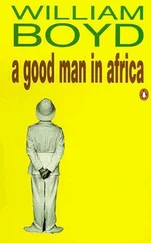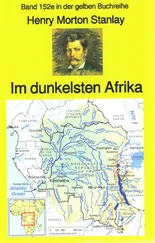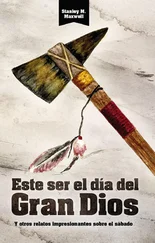James Boyd - Stanley in Africa
Здесь есть возможность читать онлайн «James Boyd - Stanley in Africa» — ознакомительный отрывок электронной книги совершенно бесплатно, а после прочтения отрывка купить полную версию. В некоторых случаях можно слушать аудио, скачать через торрент в формате fb2 и присутствует краткое содержание. Жанр: foreign_antique, foreign_prose, на английском языке. Описание произведения, (предисловие) а так же отзывы посетителей доступны на портале библиотеки ЛибКат.
- Название:Stanley in Africa
- Автор:
- Жанр:
- Год:неизвестен
- ISBN:нет данных
- Рейтинг книги:3 / 5. Голосов: 1
-
Избранное:Добавить в избранное
- Отзывы:
-
Ваша оценка:
- 60
- 1
- 2
- 3
- 4
- 5
Stanley in Africa: краткое содержание, описание и аннотация
Предлагаем к чтению аннотацию, описание, краткое содержание или предисловие (зависит от того, что написал сам автор книги «Stanley in Africa»). Если вы не нашли необходимую информацию о книге — напишите в комментариях, мы постараемся отыскать её.
Stanley in Africa — читать онлайн ознакомительный отрывок
Ниже представлен текст книги, разбитый по страницам. Система сохранения места последней прочитанной страницы, позволяет с удобством читать онлайн бесплатно книгу «Stanley in Africa», без необходимости каждый раз заново искать на чём Вы остановились. Поставьте закладку, и сможете в любой момент перейти на страницу, на которой закончили чтение.
Интервал:
Закладка:
You may leave Alexandria by canal for the Nile, and then sail to Cairo. You will thus see the smaller canals, the villages, the peasantry, the dykes of the Nile, the mounds denoting ruins of ancient cities. You will see the wheels for raising water from the Nile by foot power, and will learn that the lands which are not subject to annual overflow must be irrigated by canals or by these wheels. You will see at the point where the Nile separates into its Damietta and Rosetta branches, the wonderful Barrage, or double bridge, intended to hold back the Nile waters for the supply of Lower Egypt without the need of water wheels. It is a mighty but faulty piece of engineering and does not answer its purpose. From this to Cairo the country gets more bluffy and, ere you enter the city, you may catch glimpses of the Pyramids off to the right.
But the speediest route from Alexandria is by rail. You are soon whirled into the Moslem city. Cairo is not an ancient city, though founded almost on the site of old Egyptian Memphis. It is Saracen, and was then Kahira (Cairo) “City of Victory,” for it was their first conquest under Omar, after they landed and took Pelusium. It was greatly enlarged and beautified by Saladin after the overthrow of the Califfs of Bagdad. It dates from about A.D. 640.
It is a thickly built, populous (population 327,000) dirty, noisy, narrow streeted, city on the east bank of the Nile. Its mosques, houses, gardens, business, people, burial places, manners and customs, tell at a glance of its Mohammedan origin. Its mosques are its chief attraction. They are everywhere, and some of them are of vast proportions and great architectural beauty. The transfer of the Mameluke power in Egypt to the present Khedives was brought about by Mohammed Ali, an Albanian. The Mamelukes were decoyed into the citadel at Cairo and nearly all murdered. One named Emim Bey escaped by leaping on horseback from the citadel. He spurred his charger over a pile of his dead and dying comrades; sprang upon the battlements; the next moment he was in the air; another, and he released himself from his crushed and bleeding horse amid a shower of bullets. He fled; took refuge in the sanctuary of a mosque; and finally escaped into the deserts of the Thebaid. The scene of this event is always pointed out to travelers.
It is a city divided into quarters – the European quarter, Coptic quarter, Jewish quarter, water carriers’ quarters, and so on. The narrow streets are lined with bazaars – little stores or markets, and thronged by a mixed populace – veiled ladies, priests in robes, citizens with turbaned heads, peddlers with trays on their heads, beggars without number, desert Bedouins, dervishes, soldiers, boatmen and laborers.
Abraham sent Eliezer to find a wife for Isaac. Matrimonial agents still exist in Cairo in the shape of Khatibehs, or betrothers. They are women, and generally sellers of cosmetics, which business gives them opportunity to get acquainted with both marriageable sons and daughters. They get to be rare matchmakers, and profit by their business in a country where a man may have as many wives as he can support.
Your sleep will be disturbed by the Mesahhar who goes about the city every morning to announce the sunrise, in order that every good Moslem may say his prayers before the luminary passes the horizon.
There is no end to the drinking troughs and fountains. Joseph’s well, discovered and cleaned out by Saladin, is one of the leading curiosities. It is 300 feet deep, cut out of the solid rock, with a winding staircase to the bottom.
West of the Nile and nearly opposite Cairo, is the village of Ghiseh, on the direct road to the pyramids, mention of which introduces us to ancient Egypt and the most wonderful monuments in the world.
Menes, “the constant,” reigned at Tini. He built Memphis, on part of whose site Cairo now stands, but whose centre was further up the Nile. The Egyptian name was Mennofer, “the good place.” The ruins of Memphis were well preserved down to the thirteenth century, and were then glowingly described by an Arab physician, Latif. But the stones were gradually transported to Cairo, and its ruins reappeared in the mosques and palaces of that place.
Westward of the Nile, and some distance from it, was the Necropolis of Memphis – its common and royal burying ground, with its wealth of tombs, overlooked by the stupendous buildings of the pyramids which rose high above the monuments of the noblest among the noble families who, even after life was done, reposed in deep pits at the feet of their lords and masters. The contemporaries of the third (3966 B.C. to 3766 B.C.), fourth (3733 B.C. to 3600 B.C.) and fifth (3566 B.C. to 3333 B.C.) dynasties are here buried and their memories preserved by pictures and writings on the walls of their chambers above their tombs. This is the fountain of that stream of traditions which carries us back to the oldest dynasty of that oldest country. If those countless tombs had been preserved entire to us, we could, in the light of modern interpretation, read with accuracy the genealogies of the kings and the noble lines that erected them. A few remaining heaps enable us to know what they mean and to appreciate the loss to history occasioned by their destruction.
They have served to rescue from oblivion the fact that the Pharaohs of Memphis had a title which was “King of Upper and Lower Egypt.” At the same time he was “Peras,” “of the great house” – written Pharaoh in the Bible. He was a god for his subjects, a lord par excellence, in whose sight there should be prostration and a rubbing of the ground with noses. They saluted him with the words “his holiness.” The royal court was composed of the nobility of the country and servants of inferior rank. The former added to dignity of origin the graces of wisdom, good manners, and virtue. Chiefs, or scribes carried on the affairs of the court.
The monuments clearly speak of Senoferu, of the third dynasty, B.C. 3766. A ravine in the Memphian Necropolis, where are many ancient caverns, contains a stone picture of Senoferu, who appears as a warrior striking an enemy to the ground with a mighty club. The rock inscriptions mention his name, with the title of “vanquisher of foreign peoples” who in his time inhabited the cavernous valleys in the mountains round Sinai.
The Pharaohs of the fourth dynasty were the builders of the hugest of the pyramids. The tables discovered at Abydos make Khufu the successor of Senoferu. Khufu is the Cheops of the historian Herodotus. His date was 3733 B.C.
No spirited traveler ever sets foot on the black soil of Egypt, without gazing on that wonder of antiquity, the threefold mass of the pyramids on the steep edge of the desert, an hour’s ride over the long causeway extending out from Ghiseh. The desert’s boundless sea of yellow sand, whose billows are piled up around the gigantic pyramids, deeply entombing the tomb, surges hot and dry far up the green meadows and mingles with the growing grass and corn. From the far distance you see the giant forms of the pyramids, as if they were regularly crystalized mountains, which the ever-creating nature has called forth from the mother soil of rock, to lift themselves up towards the blue vault of heaven. And yet they are but tombs, built by the hands of men, raised by King Khufu (Cheops) and two other Pharaohs of the same family and dynasty, to be the admiration and astonishment of the ancient and modern world.
We speak now of the three largest – there are six others in this group, and twenty-seven more throughout the Nile valley. They are perfectly adjusted to points of the compass – north, south, east and west. Modern investigators have found in the construction, proportions and position of the “Great Pyramid” especially, many things which point to a marvellous knowledge of science on the part of their builders. If the half they say is true of them, there are a vast number of lost arts to discredit modern genius. Some go so far as to trace in their measurements and construction, not only prophecy of the coming of Christ, but chart of the events which have signalized the world’s history and are yet to make it memorable. They base their reasoning on the fact that there was no architectural model for them and no books extant to teach the science requisite for their construction, that their height and bases bear certain proportions to each other, and to the diameter of a great circle, that they are on the line of a true meridian, that certain openings point to certain stars, and so on till ingenuity is exhausted.
Читать дальшеИнтервал:
Закладка:
Похожие книги на «Stanley in Africa»
Представляем Вашему вниманию похожие книги на «Stanley in Africa» списком для выбора. Мы отобрали схожую по названию и смыслу литературу в надежде предоставить читателям больше вариантов отыскать новые, интересные, ещё непрочитанные произведения.
Обсуждение, отзывы о книге «Stanley in Africa» и просто собственные мнения читателей. Оставьте ваши комментарии, напишите, что Вы думаете о произведении, его смысле или главных героях. Укажите что конкретно понравилось, а что нет, и почему Вы так считаете.












